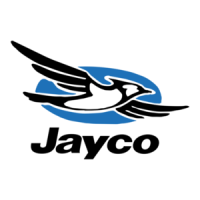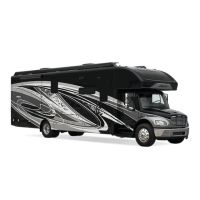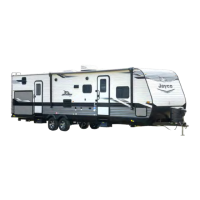89
follow the same procedure used to add the sanitizer to the system. Refer to the Lingering
Chlorine Taste detail in the previous section for instructions on how to ush the system with
the vinegar solution.
Preparing your motor home for colder weather or storage is very important for most states
and Canada. Failure to prepare your motor home may cause water supply lines and the water
heater to freeze.
The motor home should be winterized at the end of the camping season or when the motor
home will be exposed to temperatures that will fall at or below 32°F (0°C). Repairs due to
freezing are not covered by warranty.
Your motor home may be equipped with a utility center. The winterizing process is dier-
ent for units with a utility center than it is for units without one. The following sections will
address both applications. It may be easier to winterize the motor home with another person
to assist you.
If the motor home is going to be stored in a non-temperature controlled envi-
ronment with a risk of temperatures reaching 32°F (0°C) or lower, the demand
(power) system with RV antifreeze must be used in the motor home plumb-
ing system as directed in this manual. This includes appliances such as the
washer, dishwasher and the refrigerator.
Automotive antifreeze (ethylene glycol) and windshield washer anti-
freeze (methanol) are poisonous. Never use these products in your fresh
water system. These products are harmful and may be fatal if swallowed.
Never apply air pressure to the water system with any of the valves in
the closed position. Air pressure applied to a closed valve, faucet or low
point drain could potentially damage the seals and cause water leaks. If
you have questions, consult with your RV dealer. Using RV antifreeze is
the preferred method of winterization.

